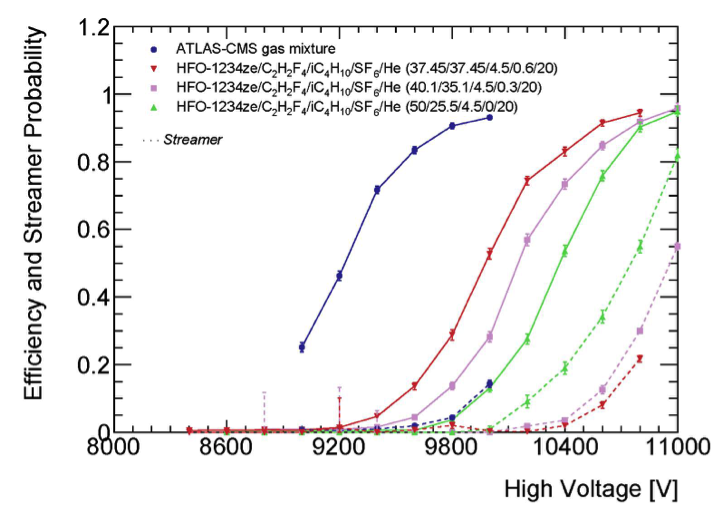LHC experiments go greener: Strategies for reduction of greenhouse gas emissions in the detector systems
At the LHC experiments a wide range of gas mixtures is used for the operation of different gaseous detectors. Some of these gases, such as C2H2F4, CF4 and SF6, are indicated as greenhouse gases (GHG) due to their high Global Warming Potential (GWP). The control of GHG emission is an important subject for the operation of the current experiments as well as for the design of future particle detectors. Indeed the European Union is taking regulatory action to control F-gases as part of its policy to combat climate change [1]. Despite the recent EU F-gas regulation, GHGs should remain available for research applications but their price could rise, possibly making gas detectors operation very costly.
Different strategies have been adopted at CERN for reducing the GHG emissions coming from particle detectors.
A common and efficient approach is the recirculation of the gas mixture by using complex gas systems. In this case, between 85% and 99% of the gas mixture is continuously recuperated and re-injected into the system allowing an excellent reduction of emissions. Nevertheless, these gas systems require a particular care and their stability as well as the accumulation of impurities need to be attentively evaluated for good and safe long-term detector operation. Gas recirculation systems allowed reducing operational costs and emissions by 90% or more already during LHC Run 1. The remaining GHG emission came from gas systems operated in open mode, leaks in the detectors or from the fraction of gas that could not be re-injected into the gas recirculation system. During LS1 several gas recirculation systems have been upgraded or tuned to optimize their efficiency. Furthermore the ALICE MTR Resistive Plate Chamber (RPC) and LHCb GEM gas systems have been upgraded to gas recirculation. In parallel dedicated studies led to the design and commissioning of a portable gas recirculation unit, which is extensively used by several detector communities for R&D and laboratory applications. A second possible action to reduce the GHG emission is the recuperation of the fraction of gas that is sent to the exhaust in the gas recirculation system. Numerous gas separation and recuperation units have been designed and built in the past years and are now operational in the different LHC experiments.
As a long-term perspective, the use of less invasive gases has also being investigated. Nowadays the hydrofluorocarbons are being substituted in industries by the hydrofluoroolefeins (HFOs), which have a very low GWP. Refrigerant properties of HFOs are well known while the effect of ionization processes in particle detectors using these new freons is under investigation. The first searches focused on replacements of C2H2F4, which is the main gas component for the RPC gas mixture and it contributes for about 70% of the total LHC particle detection GHG emission (RPC are extensively used in the ALICE, ATLAS and CMS experiments). A complete replacement of C2H2F4 with the HFOs does not give satisfactory results using the current LHC detector front-end electronics and high voltage systems. Nevertheless interesting results have been obtained for avalanche and streamer operations with several eco-friendly gas mixtures (Figure 1). Considering current and future detector application, the gas substitution is not easily feasible and long R&D tests will be necessary to find a technically viable alternative.

Figure 1. RPC efficiency and streamer probability for different gas mixtures containing 20% of He, 4.5% iC4H10, a small fraction of SF6 (between 0 and 0.6% and a partition of C2H2F4 and HFO-1234ze.
The limitation and reduction plan of the GHG emissions from the LHC experiments will continue during Run 2 and Run 3 within the two main research lines discussed above (optimization of the gas systems and possible replacement of high GWP gases). A constant effort is necessary from experiments and the DT group to pursue this purpose in the most efficient and safe way for the good operation of the LHC gaseous detectors.
References:
[1] Regulation (EU) No 517/2014 of the European Parliament and of the Council on fluorinated greenhouse gases and repealing Regulation (EC) No 842/2006.
